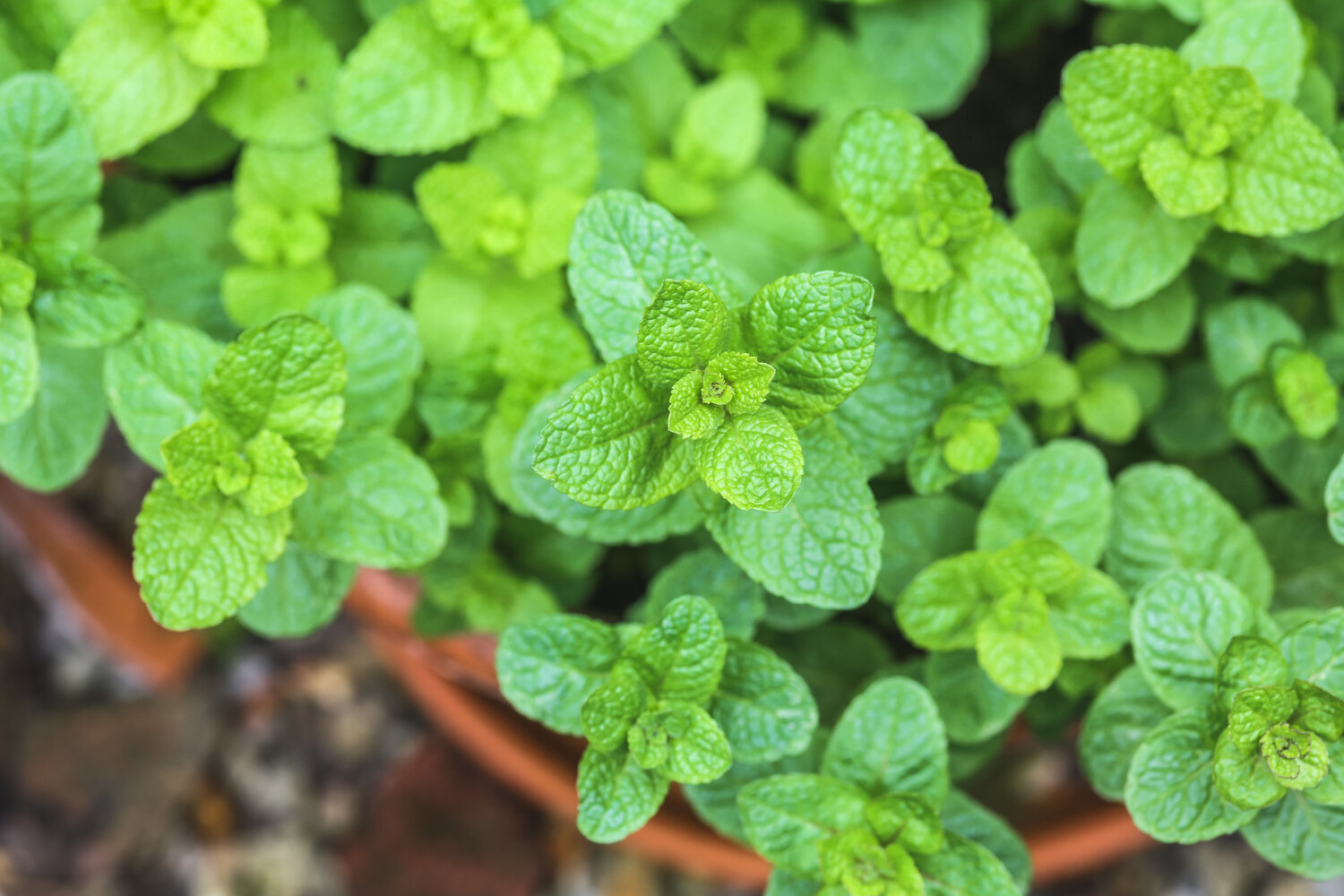Overwintering Mint
Mint is perennial but does not thrive particularly well in frost, so as a potted plant it should be stored frost-free for a good overwintering. We recommend the following to keep it happy during the colder months.

Check the soil Before moving your plant from where it has been during spring / summer, make sure the soil is dry to avoid mold growth.
Check for pests When your plant is moved to a new location and proceeds into the winter months, it might get a bit weak. Its normal resilience against pests is therefore lower. Make sure to check that your plant is healthy and free of pests before moving it to its winter location.
Cut it down Mint will benefit from being cut down before winter and you can actually be quite harsh on it, you can either cut it down 2/3 or completely. You can then freeze or dry the leaves and store them until needed.
Lower the temperature Place your plant in a cool room. For example, a garage, shed, basement, attic, summerhouse or a cool stairway if you are living in an apartment. Recommended temperature for this plant:
Add extra grow light Pick a full-spectrum light bulb and place it 20-30 cm / 8-12 inches above the plant to prevent leaf burn. Keep the light on for 10-16 hours / day.
Reduce watering Cutting back on watering during winter is key to helping your Mint to survive. The amount of water it will need will depend on the amount of light it will get and what temperature it's placed in. But in general: it's better to water it a bit too little during winter than a bit too much.
Keep an eye on it Keep checking your Mint from time to time to be able to stop any infestations at an early stage.
Growing mint in a pot might be the best solution, even if you plant it (and the plastic pot) in the ground during summer, since this is the easiest way to prevent it from taking over your garden. — Planta tip
